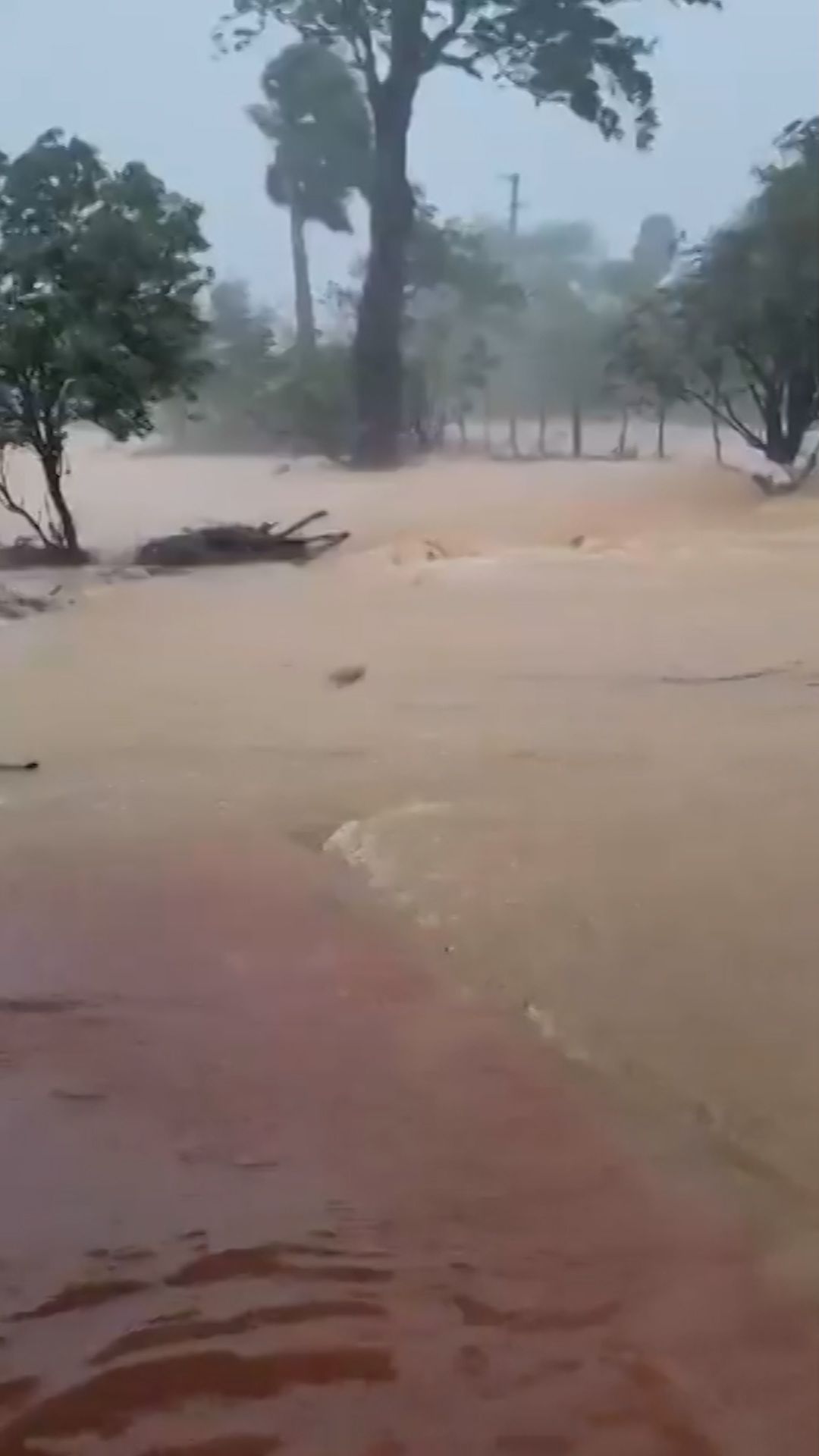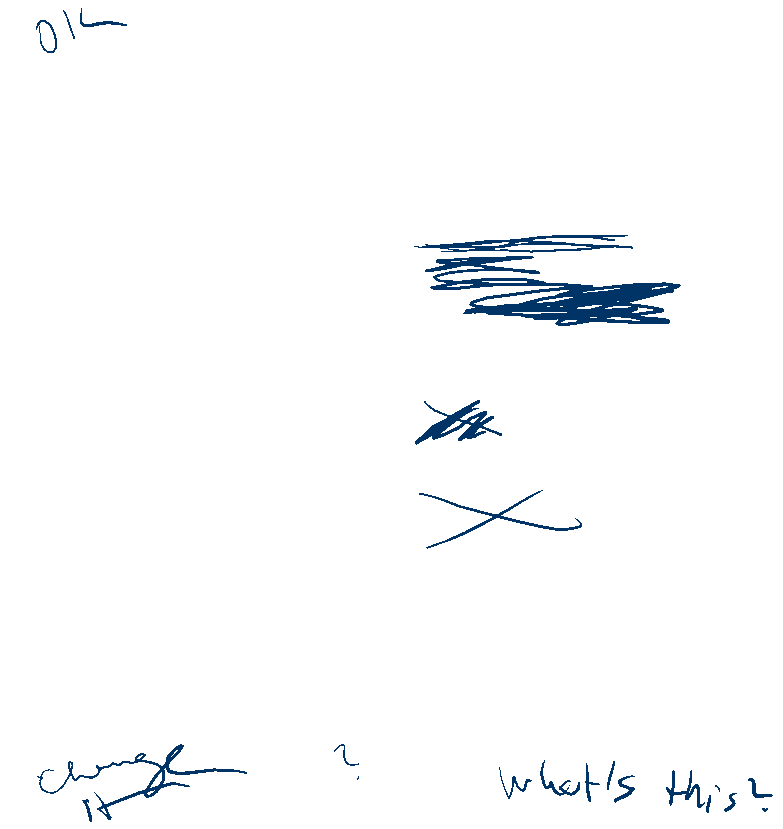Here's what's happening now
• Direct hit: Hurricane Melissa is squarely over western Jamaica, about three hours after it made landfall as one of the strongest Atlantic hurricanes in history. It has since lost some strength but is a dangerous Category 4 storm.
• Impact: We’re already seeing reports of extensive damage to homes, hospitals and schools in southwestern Jamaica. Earlier, Prime Minister Andrew Holness told CNN the storm will cause “catastrophic damage.”
• Already deadly: Melissa is responsible for seven deaths — three in Jamaica during storm preparations, three in Haiti and one in the Dominican Republic.
"Extensive damage" across southwestern Jamaica, schools and hospitals impacted, official tells CNN
Extensive damage is being reported across southwestern Jamaica, including in the parish of St. Elizabeth, an official from the country’s disaster management body told CNN, with schools, homes, and hospitals affected by Hurricane Melissa.
Black River Hospital in St. Elizabeth has also been hit, Thompson said, adding that the magnitude of the damage is not yet known.
“We have confirmed coming into our operation center impact to the Black River Hospital,” he said of the parish’s primary hospital. “We are really expecting extensive damage to that hospital.”
The fire brigade is carrying out emergency rescue operations in the neighboring parish of Manchester, Thompson added.
Melissa is now a Category 4 hurricane
Melissa continues to lose some strength, but remains a very dangerous hurricane as it tracks over Jamaica.
As of 4 p.m. ET, Melissa is a Category 4 hurricane with winds of 150 mph, according to the National Hurricane Center. The hurricane’s center was about 10 miles south of Montego Bay, Jamaica, and was heading north-northeast at 8 mph.
Melissa’s center will likely move off land and out into the Caribbean Sea in the next hour or two.
Hurricane Melissa is churning across Jamaica. Here's what we know so far
Hurricane Melissa is now making its way over Jamaica after making landfall earlier this afternoon.
The powerful hurricane is expected to dump heavy rain and batter the country with wind and storm surge.
Status of the storm: Melissa’s wind speed has decreased to 160 mph, making it still a Category 5, according to the National Hurricane Center (NHC).
Impacts so far:
- Bridges and roads have flooded, including some of the primary roads accessing remote areas, Jamaica’s National Works Agency said.
- Authorities are receiving reports of “severely damaged public infrastructure, hospitals, (and) places of safety,” with many homes “inundated and flooded,” according to Matthew Samuda, Jamaica’s Minister of Water, Environment and Climate Change.
- Officials are warning residents that heavy rains and flooding “may result in crocodiles being displaced,” the South East Regional Health Authority
- There were widespread reports of internet outages as the storm approached Jamaica, internet watchdog NetBlocks said.
- The NHC director said it could take “days to weeks” to fully assess damage.
Supplies of aid: Relief flights with food and other aid could begin as soon as Thursday, said Daryl Vaz, Jamaica’s Minister of Science, Energy, Telecommunications and Transport. Starlink will be free for those who are impacted, the company said.
What’s next: Melissa is expected to remain a major hurricane when it impacts Cuba starting tonight into Wednesday morning, according to the NHC. About 168,900 people have been evacuated in Santiago de Cuba, one of five provinces under a hurricane warning, according to Cuban officials.
What some of the impact in the video below:

Videos show heavy rains, intense winds and flooding as Hurricane Melissa hits Jamaica.
CNN’s Mary Gilbert, Michelle Watson, Joe Sutton, Billy Stockwell, Catherine Nicholls, Tara John and Michael Rios contributed reporting to his post.
Evacuations continue in Cuba as Hurricane Melissa approaches

About 168,900 people have been evacuated in Santiago de Cuba, the island’s second-most populated province, as Hurricane Melissa approaches, according to Cuban officials.
Authorities are prioritizing high-risk areas in the province, including coastal and mountain communities, settlements near rivers, and areas downstream of reservoirs, Beatriz Johnson Urrutia, the First Secretary of the Provincial Party Committee, said.
On Tuesday afternoon, police announced a curfew in the provincial capital, telling people to stay indoors until the storm passes.
Santiago de Cuba, one of five Cuban provinces under a hurricane warning, is expected to experience the worst conditions from Tuesday night to Wednesday morning, with peak wind gusts reaching 100 to 120 mph.
Cuba’s energy ministry says it will disconnect three thermal power plants in the east, where the storm is expected to strike.
Damage and heavy rain from Melissa will likely further compound Cuba’s problems, including dire power shortages, economic instability and an epidemic of the disease dengue, which is carried by mosquitoes.
Could take days to weeks to evaluate scope of damage, NHC director says

Fully assessing the damage caused by Hurricane Melissa in Jamaica could be a long process, the director of the US National Hurricane Center said.
“It may take days to weeks to fully capture the scope of what’s happening here and what’s happening in the next few hours,” Michael Brennan told CNN.
Things like communication systems being down and debris lead to communities being isolated, he said.
Melissa hit Jamaica as a Category 5 storm with 185 mph winds — the strongest storm on record to smash into the country. It’s now tracking over Jamaica, bringing catastrophic winds, flooding rain and life-threatening storm surge.
Key context: A UN agency called it “the storm of the century.” Before it made landfall, Prime Minister Andrew Holness said Melissa would cause “catastrophic damage.”
While Jamaica’s infrastructure in urban areas like Kingston has improved over the years, rural and informal settlements remain vulnerable, Michael Taylor, a climate scientist, told CNN. The country’s electric grid was already strained ahead of landfall, one official said.
CNN’s Hanna Park contributed reporting to this post.
What it's like in Jamaica's rural Saint Elizabeth Parish, where flood waters are rushing through the streets
Video captured on the ground in Saint Elizabeth Parish, Jamaica, shows flood waters churning in the street amid intense winds.
This rural district is a tourism hotspot, with a popular waterfall known as YS Falls, which sits about 20 miles away from this inundated street.
Take a look:

Starlink says service is free for those hit by Melissa in Jamaica and the Bahamas
Starlink – Elon Musk’s satellite internet service – will be free for those who are impacted by Hurricane Melissa, the company said today.
Regions across Jamaica "inundated with floods," says minister

Hurricane Melissa has had a “catastrophic effect” on Jamaica, the country’s climate change minister told CNN, noting that regions across the whole island have been “inundated with floods.”
Around 70% of the island’s population lives within 5 kilometers (3.1 miles) of the sea, Samuda said. Though preparations were made in advance of the Category 5 storm, “there (are) limited things you can do to prepare for a storm of this nature,” he added, noting that it is a “very dicey situation.”
“We are monitoring very carefully, and we’re hoping for storm conditions to subside so rescue teams can go into the field where we’ve had distress calls,” the minister said.
Melissa is clinging to Category 5 status
As of 3 p.m. ET, Hurricane Melissa has sustained winds of 160 mph, according to the National Hurricane Center. Category 5 hurricanes have winds of 157 mph or greater, so Melissa is close to shedding its rare status.
Despite the 5 mph drop in wind speeds in the past hour, Melissa is still a violent hurricane. The hurricane center had this dire warning for Jamaicans in its latest update:
The eye of a hurricane is actually an area of relatively calm weather. It can lure people within it into a false sense of security that the danger is done, when it is far from over.
"What I really want to know is that they're OK." Jamaican resident cut off from mother and sister
Byron Pearce is stuck in his second-floor apartment in Negril, on the western coast of Jamaica, as the wind blows water up against the windows and door.
Pearce had placed sandbags at his apartment door to try and stem the flow of water, but they are having little effect, he said. “The water is still coming under my door. At the moment, I have to be constantly trying to use towels to get some of that water dried up.”
But it’s not the risk of flooding that is worrying him — it is the safety of his mother and sister, whom he is struggling to contact.
Pearce’s mother and sister live at their nearby family home, which is just minutes away. It is simply too dangerous to try and reach them, Pearce said.
“I haven’t been able to get through to my mother and my sister for the past hour, so that would be my main concern right now,” he said. “What I really want to know is that they’re OK … I’m just hoping that maybe their batteries are dead.”
Melissa's eye is fully inland over Jamaica
Melissa’s center is now squarely over western Jamaica, two hours after it officially made landfall.
The hurricane is interacting with land, cut off from the warm water fuel it needs to maintain its full power. Melissa appears to be losing some strength, as evidenced by the dramatic shrinking of its eye in the loop above.
A clear, almost perfectly circular eye is a sign of an intensely powerful hurricane. Melissa still has an eye, but the shrinking and slight warping of that circle indicates the ferocious winds rushing around the eye — called the eyewall — are taking a hit.
Widespread internet outages reported across Jamaica; roads and bridges are flooded

There were widespread reports of internet outages across Jamaica as Hurricane Melissa approached the island earlier today, according to the internet watchdog NetBlocks. The outages were reported as winds brought down power lines, the watchdog said on X.
The parish of Hanover in the northwest of the island had only 2% network connectivity at around 11:20 a.m. local time (12:20 p.m. ET), NetBlocks said. Other regions had connectivity rates between 53% and 86%, it added.
Damage to other infrastructure across Jamaica is also being reported.
Bridges and roads across the country have flooded, including some of the primary roads accessing remote areas, Jamaica’s National Works Agency said in various posts on social media
Jamaican officials tell residents to keep an eye out for displaced crocodiles in flood waters
Jamaican officials are warning residents about another hazard amid dangerous weather conditions from Hurricane Melissa: crocodiles.
The heavy rains and flooding associated with the storm “may result in crocodiles being displaced from their natural habitats,” the South East Regional Health Authority, part of the country’s ministry of health, said in a statement today.
People living near those areas should “remain vigilant” for the unsuspecting wildlife and avoid flood waters. Specifically, officials said residents in Kingston, St. Andrew, St. Catherine and St. Thomas should “exercise extreme caution.”
“Keep children and pets away from flood-waters or areas where crocodiles have been sighted,” the statement said.
There are around 28 species of crocodiles found throughout the world’s tropical and subtropical regions. But there is only one species in Jamaica — the American crocodile — which is found primarily along the southern coast from St. Thomas to Westmoreland.
In recent years, its population has been decimated, due to illegal hunting, habitat loss and plastic pollution, as well as killings prompted by a lingering fear among locals.
CNN’s Joe Sutton and Isabelle Rodney contributed reporting to this post.
Melissa's name will be up for retirement
This is likely the last time “Melissa” will be used as Atlantic storm name.
Name lists for tropical storms and hurricanes are reused every six years. The exception is if a storm is so deadly or damaging that its name is retired by a World Meteorological Organization committee the following year. Those individual names are then replaced with new ones beginning with the same letter, while the rest of the six-year rotating list remains the same.
Melissa’s rampage through the Caribbean, including a destructive Category 5 landfall in Jamaica, make it a candidate for retirement.
Melissa was first used as a name in 2007. It replaced “Michelle”, which was retired following Category 4 Hurricane Michelle in the 2001 season.
Last year, three hurricane names were retired: Beryl, Helene and Milton.
Groups spring into action for food and other means of aid, as relief flights could begin Thursday
Several organizations and authorities have sprung into action as Hurricane Melissa made landfall around 1 p.m. ET Tuesday near New Hope, Jamaica, as a Category 5 storm with 185 mph winds.
Daryl Vaz, Jamaica’s Minister of Science, Energy, Telecommunications and Transport, “has announced that emergency relief flights could be accommodated at NMIA as early as October 30, 2025, provided there is no extensive damage from Hurricane Melissa, which is expected to leave the island by Wednesday,” according to a post on X from the Jamaica Information Service.
The UK said it is positioning “rapid deployment teams” in the region to support British nationals and is preparing to deliver humanitarian assistance to those in need.
British Foreign Secretary Yvette Cooper said the government is “closely tracking” the impact of Melissa and stands “ready to mobilise resources to support British nationals and Jamaica, at its request.”
World Central Kitchen said in a post on X that its partner, “Mystic Thai prepared meals ahead of Hurricane Melissa’s arrival,” – a comforting plate of curry chicken with rice and salad.
Melissa losing some strength but remains a violent Category 5
Hurricane Melissa’s wind speed has decreased as it tracks deeper into Jamaica Tuesday afternoon. As of 2 p.m. ET, the hurricane’s maximum winds are at 165 mph, down 20 mph from just an hour ago, according to the National Hurricane Center.
Hurricanes are fueled by water, so any interaction with land starts to degrade them. But Melissa is so powerful, that drop in wind speed does not significantly affect its impact.
Catastrophic winds, flash flooding and storm surge are occurring on Jamaica, the hurricane center warned.
What happened and what's next: Here's the latest on Hurricane Melissa
Hurricane Melissa just made landfall in Jamaica as a Category 5 storm. Officials are warning it could bring catastrophic damage to the country.
Here’s a quick rundown of what to know:
- What the hurricane is like: Melissa made landfall at around 1 p.m. ET near New Hope, Jamaica. Its 185 mph winds make it the strongest storm on record to smash into the country. Melissa is also tied as the second-strongest hurricane in Atlantic history, in terms of wind speed.
- What’s coming next: Melissa will track directly over Jamaica for the next few hours, bringing catastrophic winds, flooding rain and life-threatening storm surge. Central parts of Jamaica could see as much as 30 inches of rain over the next two days, said Evan Thompson, principal director of Jamaica’s Meteorological Service.
- What’s to expect after that: Melissa is expected to remain a major hurricane, at least Category 3 or more, when it impacts Cuba starting Tuesday night into Wednesday morning, according to the National Hurricane Center. Then, hurricane conditions are expected in the southeastern and central Bahamas on Wednesday.
- What it’s been like on the ground: Even before landfall, hurricane conditions were already pummeling the island. About 240,000 people were without power before landfall as the grid was strained, said Daryl Vaz, Jamaica’s Minister for Science, Energy, Telecommunications and Transport.
- What people are saying: A restaurant owner in the village of Alligator Pond on the southwestern coast of Jamaica said the “whole coastline is gone.” Many communities have been evacuated, but others say they are riding out of the storm. Brian Trascher, of the United Cajun Navy, said conditions were “deteriorating rapidly” ahead of landfall.
- What we know about fatalities: At least three people died during storm preparations in Jamaica, according to the national minister of health and wellness. Two of the deaths are from falling trees, and one person was electrocuted, the minister said. Another 13 people have been injured. Three people in Haiti and one person in the Dominican Republic have also lost their lives.
CNN’s Char Reck, Christian Edwards, Chris Dolce, Mary Gilbert, Michael Rios and Taylor Ward contributed reporting to this post.
Watch Hurricane Melissa make landfall
In the loop above, Category 5 Hurricane Melissa approaches, then makes landfall in western Jamaica.
The hurricane’s clear eye – its center – is surrounded by its most powerful winds, called the eyewall. Those destructive winds roared onto land well ahead of landfall.
Landfall officially occurred once at least half of the clear eye moved onto Jamaica.
Melissa makes landfall in Jamaica as a destructive Category 5 hurricane
Hurricane Melissa made landfall around 1 p.m. ET Tuesday near New Hope, Jamaica, as a Category 5 storm, according to the National Hurricane Center.
The hurricane’s winds of 185 mph at the time make it the strongest storm on record to smash into the country. Melissa is also one of the strongest hurricanes on record to make landfall in the Atlantic basin, tied with only two other storms — 2019’s Dorian and 1935’s Labor Day hurricane.
Melissa is the strongest storm to make landfall anywhere in the Atlantic basin since 2019’s Hurricane Dorian. Dorian had winds of 185 mph when it slammed into the Bahamas’ Abaco Islands.
Previously, the strongest storm to make landfall in Jamaica was 1988’s devastating Hurricane Gilbert. Gilbert was a Category 4 hurricane when it made landfall just west of Kingston.
Melissa will track directly over Jamaica for the next few hours, bringing catastrophic winds, flooding rain and life-threatening storm surge. Its center is currently moving north-northeast at 9 mph.
Hurricane Hunters encounter "heavy turbulence"
Air Force Reserve Hurricane Hunters encountered “heavy turbulence” this morning while entering the eye of Category 5 Melissa.
“During the event, the aircraft briefly experienced forces stronger than normal due to turbulence,” the unit said in a statement posted on X.
The flight was returning to a base in the southern Caribbean nation of Curaçao, where the flight began, for inspection as a standard safety procedure before returning to service.
Yesterday, a NOAA Hurricane Hunter flight cut short its mission and returned to base for inspection after encountering severe turbulence.







